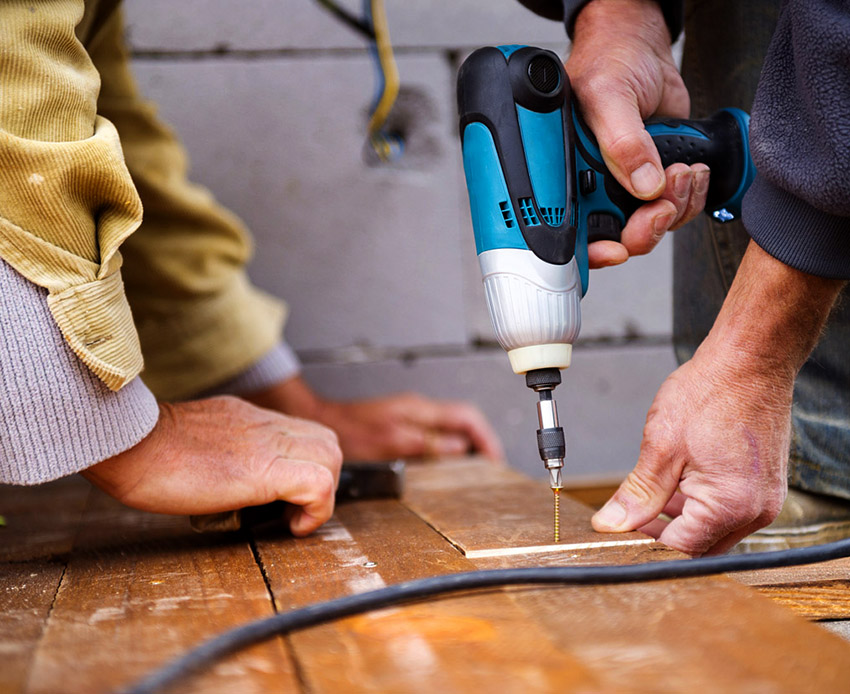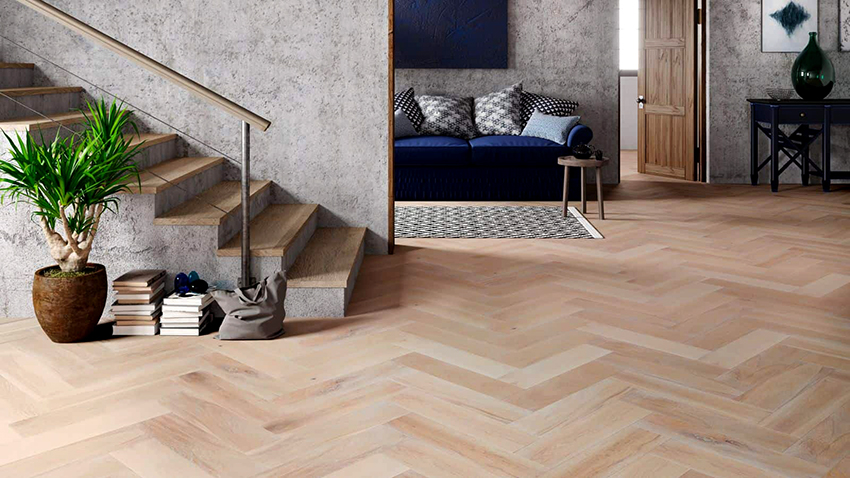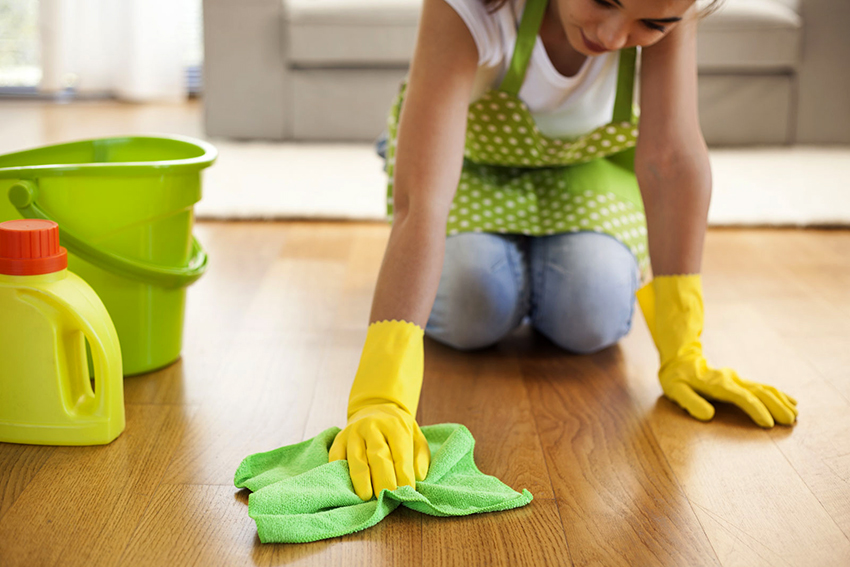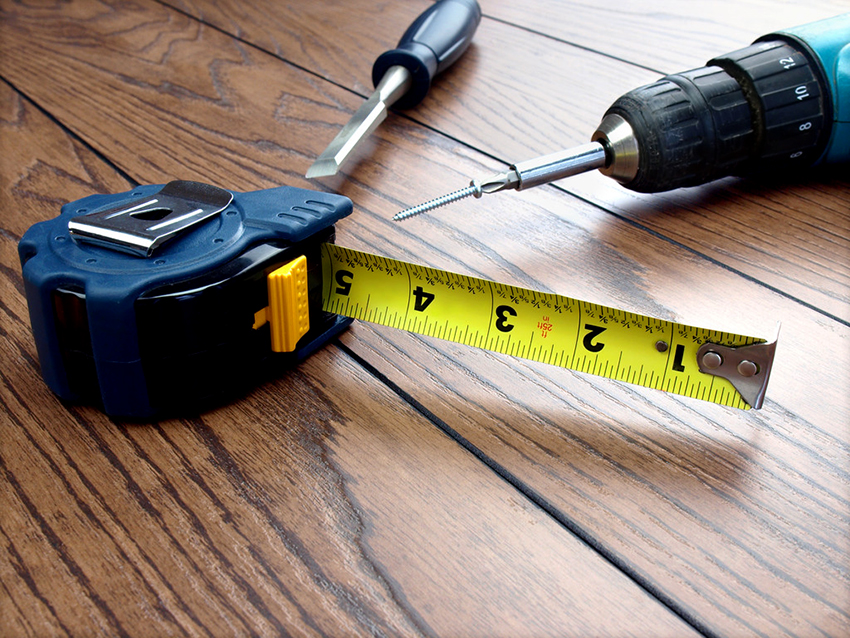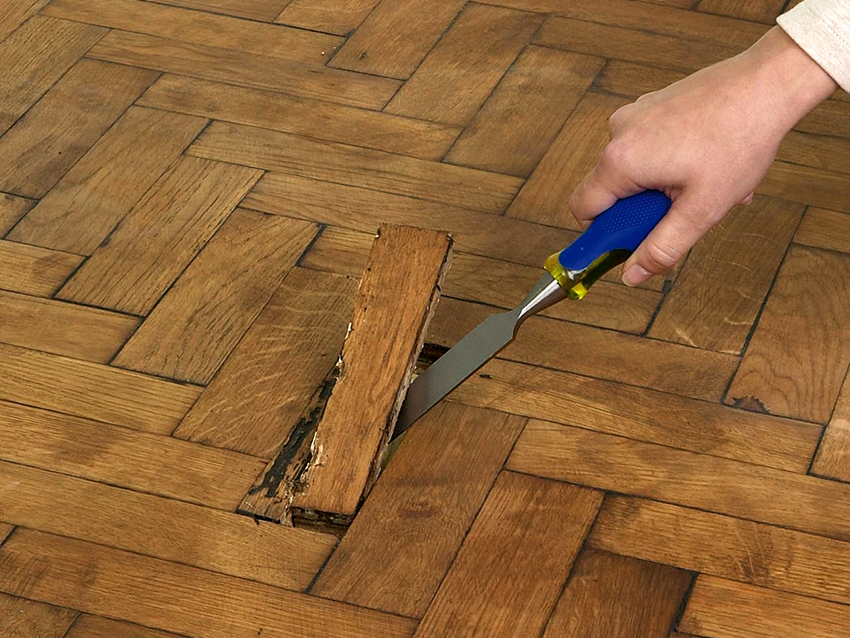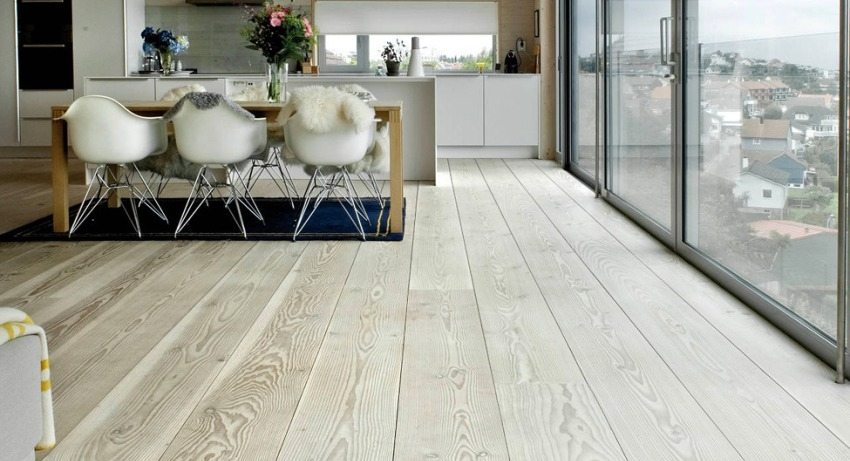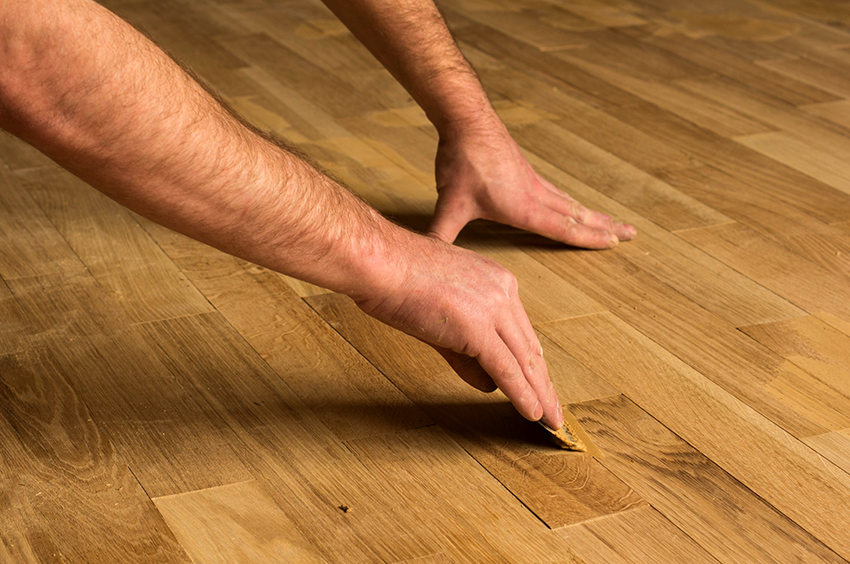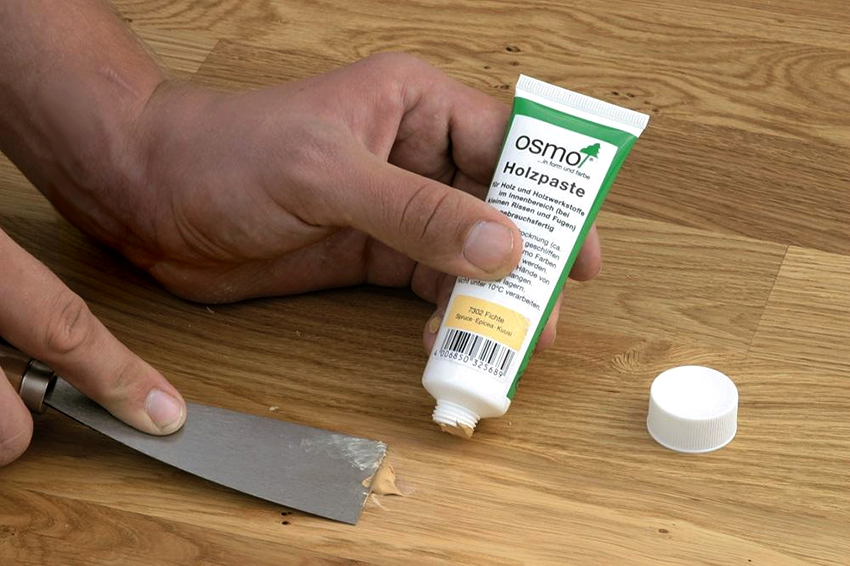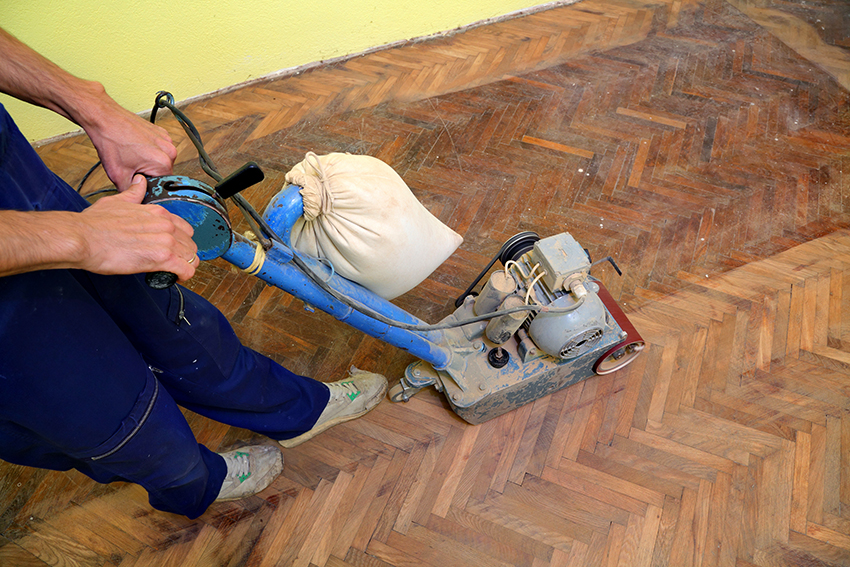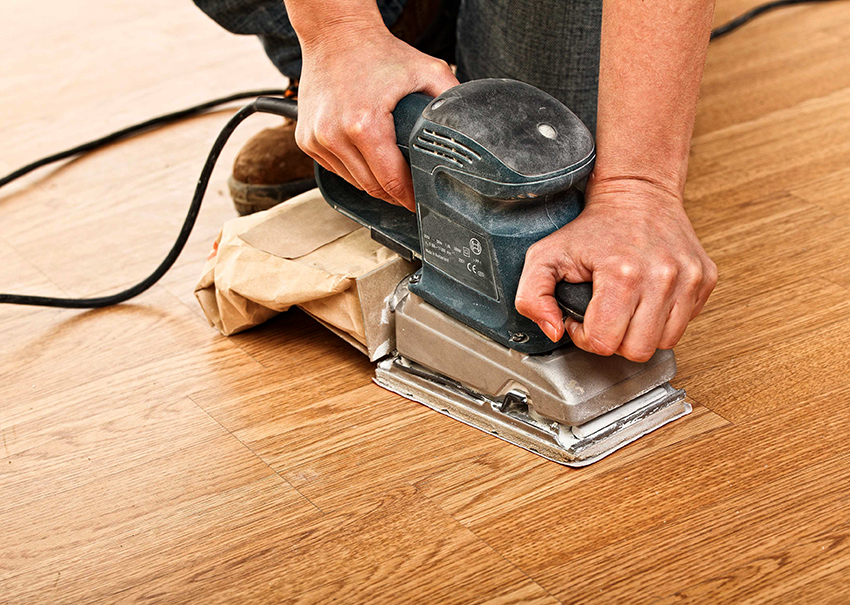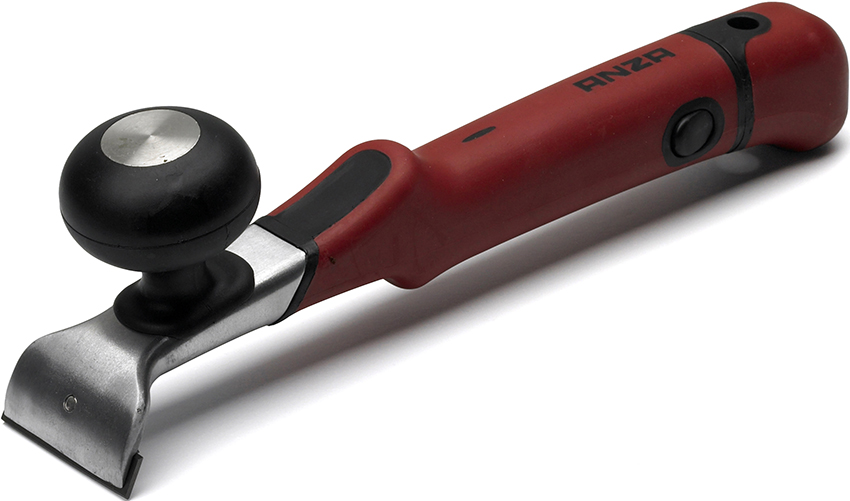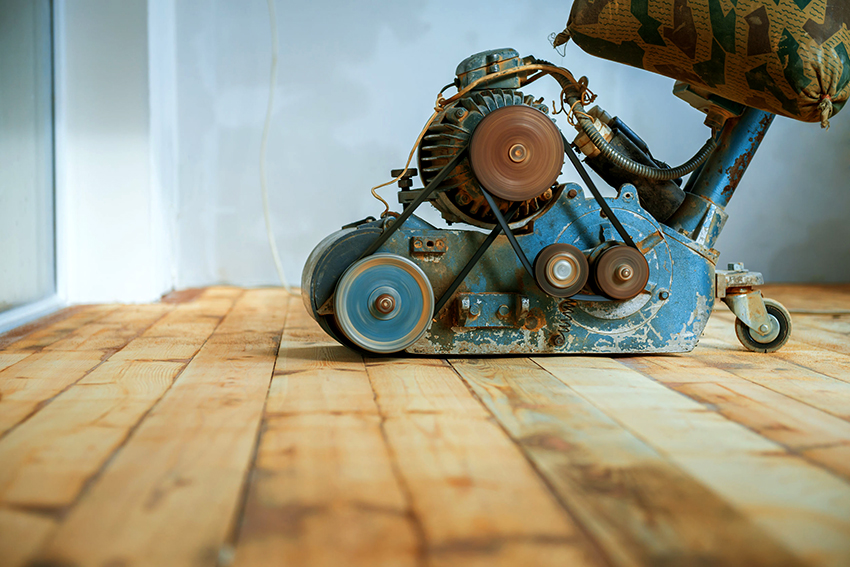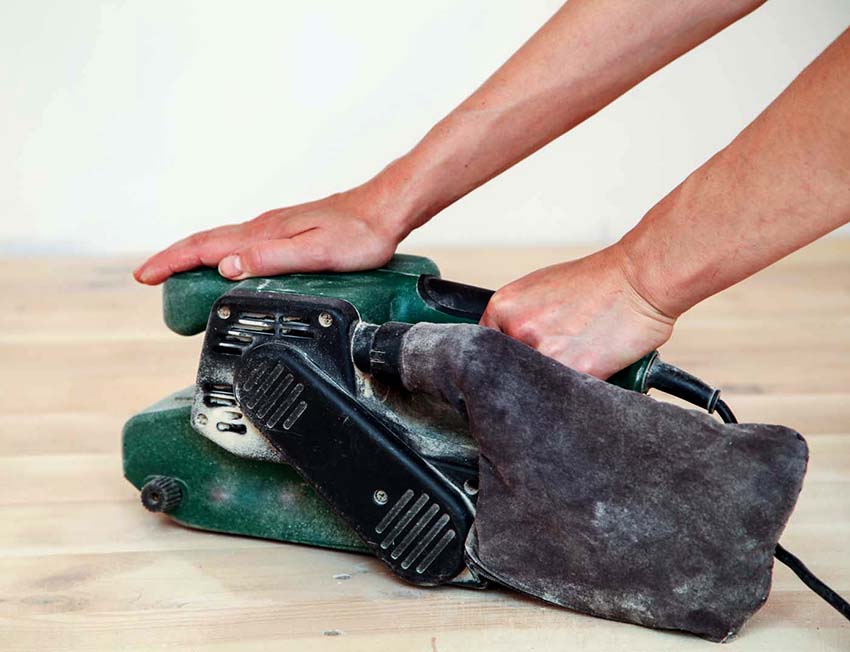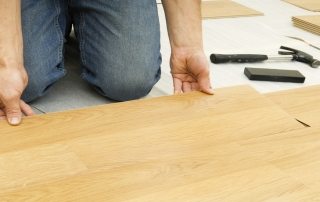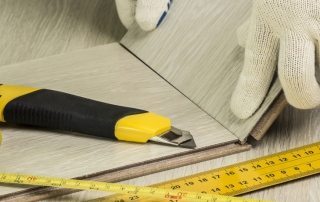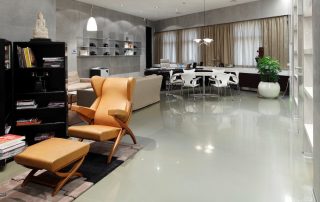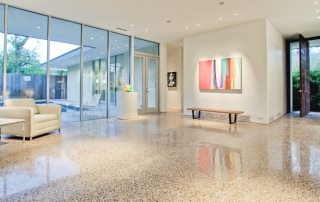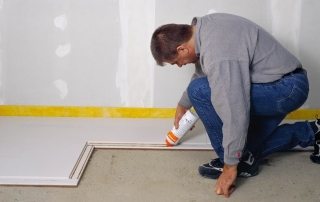For a long time, parquet has been considered one of the most expensive materials for floor finishing, since natural wood is used for its manufacture. Correctly laid parquet looks aesthetically pleasing and attractive, moreover, its service life is much longer than that of other coatings. Often the question arises of how to preserve the parquet in perfect condition: repairs will not have to be carried out often, if you constantly take care of the coating and eliminate them when defects appear.
Content [Hide]
- 1 The main types of parquet restoration with your own hands
- 2 The main reasons why parquet flooring loses its appearance
- 3 Parquet: repair and preparation of the premises for the main types of work
- 4 Spot repair of old parquet: elimination of cracks and restoration of loose boards
- 5 Features of the parquet repair without scraping
- 6 Parquet repair and restoration: scraping, sanding, what makes these types of work different
The main types of parquet restoration with your own hands
Before raising the issue of restoring a parquet board or parquet, it is necessary to first analyze the condition of the flooring and, when specific problems are identified, make a decision on the need for repair. To do this, you should think over the main stages of work, approximately calculate the costs so that during the repair process you do not face the problem of lack of funds. Only after a preliminary assessment can work begin.
Depending on the degree of complexity of the repair and restoration of the parquet, the work carried out can be divided into 3 types:
- Major overhaul. It is carried out mainly after the warranty period of the floor covering has expired and if the price of parquet restoration is higher than the cost of capital replacement of boards.
- Medium renovation. It is planned when there are obvious defects on the floor that require elimination, for example, discoloration of the surface, the appearance of stains, the movement of some elements or squeaking when pressed. The work consists in replacing the parquet or restoring individual tiles of the coating.
- Parquet floor maintenance. This measure is more likely to be a preventive one, it allows you to postpone the overhaul for a long time.
Helpful information!Parquet is one of the most resistant coatings.With proper operation and timely repair and maintenance, it can serve for several decades. Moreover, most of the restoration work can be performed locally.
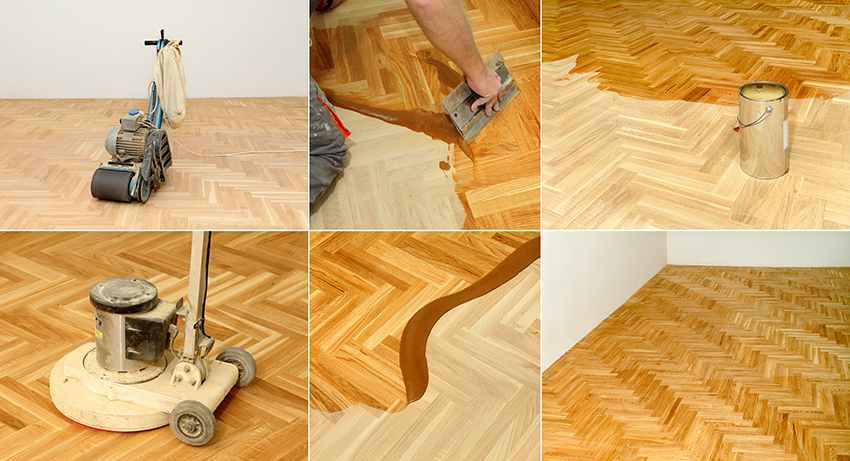
Medium-sized repairs include general restoration of parquet flooring or replacement of individual boards
The main reasons why parquet flooring loses its appearance
The need for repair and restoration of parquet in any case will sooner or later arise, and the main reason for this is constant and long-term operation. After all, on parquet not only walk in house shoes, furniture is moved over it, the coating is damaged with sharp heels or rough soles. Other causes of defects include:
- Constant excess moisture. Wood is characterized by the ability to swell when wet, the same applies to wooden parquet strips. If this is a basement floor and a special waterproofing layer is not laid under the parquet, then the coating will swell sooner or later, and walking will be accompanied by a creak.
- Excessively dry air. The constant high temperature in the room causes the wooden elements to dry out, which is likely to cause deformation and distortion of the base.
- Improper cleaning. Frequently wet cleaning with an ordinary mop or steam cleaner leads to the accumulation and retention of liquid in the crevices, which can lead to rotting of the wood.
- Lack of processing. If the purchased parquet has not been pre-treated with special agents that prevent the growth of fungi or wood pests, then such a floor will quickly become unusable, even with proper care.
Discoloration of the surface is one of the main reasons for repairing a parquet board. This is mainly due to the use of unsuitable detergents, excess moisture or the ingress of aggressive chemicals, for example, ammonia. Also, the main problems include:
- Cracks appear. The main reason is considered to be overdried air, which often occurs in winter with the active use of heating devices. The preferred humidity in a room with parquet is 40-50%.
- Bloated boards. It is formed due to the accumulation of water under the surface of the board or due to improper repair of the parquet after filling the room.
- Lack of heat resistance. It is associated with improper installation of insulation or poor processing of joints, and can also be caused by insufficient preparation of the base.
- Displacement of the boards when walking. It occurs as a result of a violation of the technology for making a screed, the absence of a soil layer or the formation of mold on the inside of the boards.
- Peeling of parquet from the base. The problem occurs when there are irregularities on the floor, due to uneven application of the adhesive mixture, as well as when the dies are not properly attached to the wooden base.
- The cracks between the boards. The main reason for the appearance is the use of too wet material.
- Glue protrusion. Occurs as a result of the application of a very thick layer, incorrect laying of boards or due to incorrectly sized sheets.
- Scratches and dirt. This happens mainly when the floor covering is used carelessly.
The most common problem that makes it necessary to replace parquet is floor subsidence resulting from the failure of the screed under heavy load.
Parquet: repair and preparation of the premises for the main types of work
Any repair or restoration of parquet in an apartment should begin with the preparation of the premises. To do this, you need to take out all the furniture and interior items from the room.If you make a local replacement of boards, then you can repair the parquet without taking out the furniture, but in any case, it is better to cover it with a film to protect it from dust settling. With a major replacement, the room should be completely vacated, because any type of repair will be accompanied by dusty work, especially if you need to adjust the boards to size using a jigsaw.
It is also better to immediately identify all the damage, you can even circle them with chalk, so as not to miss out on defective areas during the repair process. After assessing the condition of the coating, you should take care of the availability of some tools, especially if you will be restoring the parquet with your own hands. This includes:
- surface grinder or parquet grinder;
- angle grinding;
- cycle;
- sandpaper with varying degrees of abrasiveness;
- vacuum cleaner;
- chisel and plane;
- jigsaw;
- putty for wooden structures;
- topcoat, which includes varnish, wax or oil.

After assessing the condition of the parquet and determining the type of restoration, you need to stock up on all the necessary tools
We should not forget about personal protective equipment, because some types of work should be carried out with gloves, and when using a jigsaw, it is recommended to cover your eyes with protective glasses.
Spot repair of old parquet: elimination of cracks and restoration of loose boards
The price of parquet repair will primarily depend on the degree of damage. Often, work on the local replacement of some elements will cost a little less than overhaul, because it will be necessary to fit new parts to those already laid. The duration of the operation of the floor covering without additional measures is influenced by the quality of local work.
The most common reason for minor parquet repairs is the appearance of cracks due to loosening of the planks. This problem is relevant in view of the fact that wood is a capricious material, which is characterized by swelling and drying out. Therefore, preventing the occurrence of cracks is considered a rather difficult task, since it is not always possible to maintain constant humidity and temperature in the room.
Helpful advice! When large gaps appear, first of all, it is necessary to pull off the strips, and lay a wooden blank in the free space, which will be enough to close the gap. If there are a lot of gaps, it is better to lift the cover completely and re-lay it. You need to be prepared for the fact that some of the slats will need to be replaced.
It is recommended to take into account that if only a certain number of planks are replaced during loosening, there is no guarantee that over time the same defect will not occur in another part of the floor. DIY step-by-step instructions for repairing parquet flooring:
- Using a chisel, remove the dies that are loose. If the element does not get well, you can try to split the part with a sharp end by inserting a chisel parallel to the fiber structure. After the split, the element is taken out in parts.
- Remove the remaining adhesive mixture and clean the base on which the removed boards were located.
- Use a putty when severe unevenness is formed.
- Remove the side edges from the dies that require replacement, and align the ends with a planer.
- Sometimes, in order to install several strips, the parts adjacent to them are also replaced.
In some cases, when replacing several elements, the picture is collected separately, and then, in one piece, is placed in the resulting space. At the same time, it is necessary that the details are ideally combined with the rest of the parquet in design and color and fit into the overall picture. When replacing individual parquet boards, you can use special glue or bitumen mastic, which requires warming up before use.
After the replacement of a certain section of the parquet has been carried out, a load should be placed on top. In this case, it is necessary to additionally capture small areas located next to the long-glued elements. If glue residues come out on the sides of the edges, they must be removed immediately, because after drying it will be impossible to remove the glue without traces.
When the boards are firmly adhered to the base, and the glue is completely dry, restoration work will be required. To do this, you need to clean the treated area with sandpaper, then remove the dust and cover the new parquet with varnish, oil, mastic or the same compound that was used to treat the entire surface.
How to get rid of squeaks and other problems that require restoration of old parquet
The problem of squeaking floors is familiar to many, because it is considered one of the most common, arises from the friction of the slats against each other under the influence of weight. In this case, you can try to repair the parquet with your own hands using any type of fastener. These can be screws, self-tapping screws or other options, screwed in flush with the coating. After screwing in the element, the installation site is hidden with a putty of the desired color.
Another reason for unpleasant sounds is the floor covering peeling from the base. Returning the boards to their original position is considered an important task here. To repair the squeak of parquet you may need:
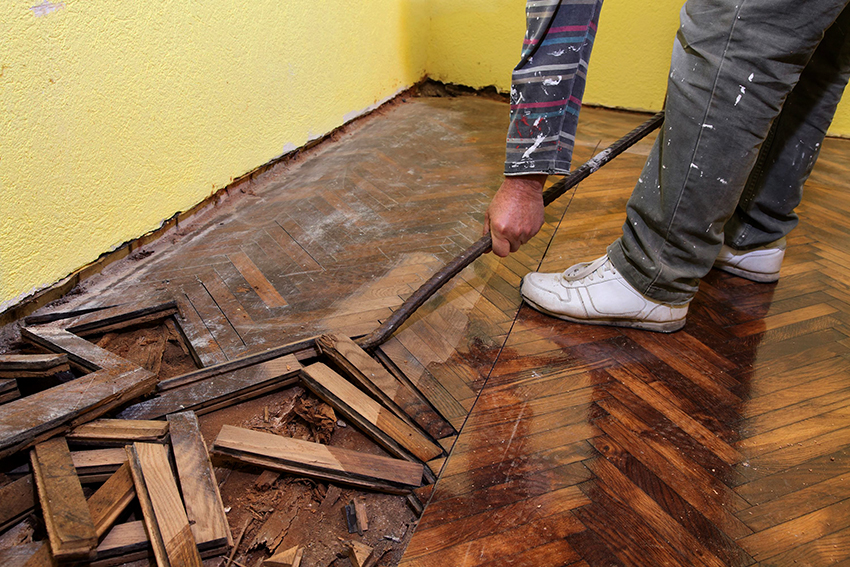
In some cases, in order to eliminate the squeak, you will have to completely or partially remove the parquet
- self-tapping screws, with the help of which individual strips are pulled together with the base;
- an adhesive mixture introduced into the gap between the strips by means of a syringe or syringe with a thin plastic tip;
- polyurethane foam, due to strong swelling, is recommended for use less often.
The most expensive parquet repair will consist in the complete or partial dismantling of the planks, after which they are re-laid, and the most inappropriate parts are either adjusted or replaced with new ones.
The third reason for the friction of the boards against each other is considered to be a violation of the technique of laying the dies and the incorrectly calculated distance between them. In this case, local repair of the parquet is not allowed, because in any case, you will need to completely remove all the elements, as well as move the logs, after which the coating is laid again.
Helpful advice! If, during assembly, one lath has shifted, you should not completely lift the entire parquet. It is necessary to disassemble the adjacent part of the covering, use a hammer to knock the log into place, and then put the parquet again.
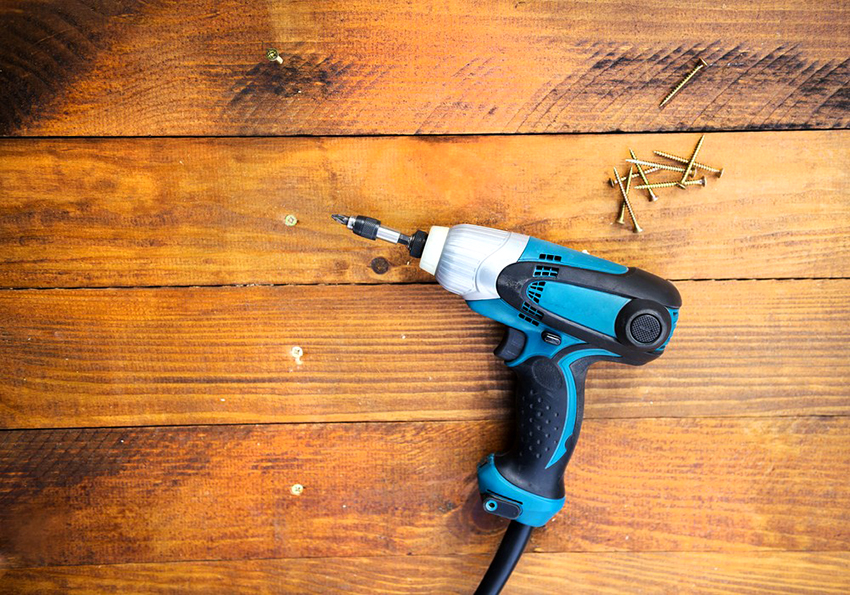
If some of the parquet strips have peeled off, then the problem can be eliminated using self-tapping screws and a screwdriver
In addition to the above reasons, the absence of an expansion joint, which should be located between the edge of the parquet and the wall, can also lead to the appearance of creaking sounds. In order to correctly perform the seam, after laying, it is required to cut off part of the coating to form a small gap, the optimal size of which is 1-1.5 cm. There are other reasons why it may be necessary to repair panel parquet or ordinary plank coating.
The appearance of a drop between shields or individual elements. In this case, it is required to sort out a significant area, because the cause of the violation may be the deformation of the base. If a step is small in height, you can try to raise the protruding strips, cut off part of the coating at the base, or grind it.
Related article:
Which is better, laminate or parquet board: reviews and comparative characteristics
Owner reviews and expert advice. Advantages and disadvantages of materials.Features of laying and caring for laminate and parquet.
Darkening of the surface. The main reason for the restoration of old parquet is considered to be the hit on the surface of aggressive chemicals that quickly penetrate deep into the wood. Another reason is the wrong type of tinting or other coating. In this case, the only option for repairing parquet is scraping and grinding, after which a varnish, tonic or oil-wax mixture is applied.
What is the restoration of parquet after the flood
Exposure to a large amount of water on the parquet floor is considered one of the destructive factors, because wood is a natural material, and moisture almost instantly enters the pores and microcracks. As a result of the gulf, the boards not only swell, but also lose their shape, their structure is disrupted. In addition, other problems arise:
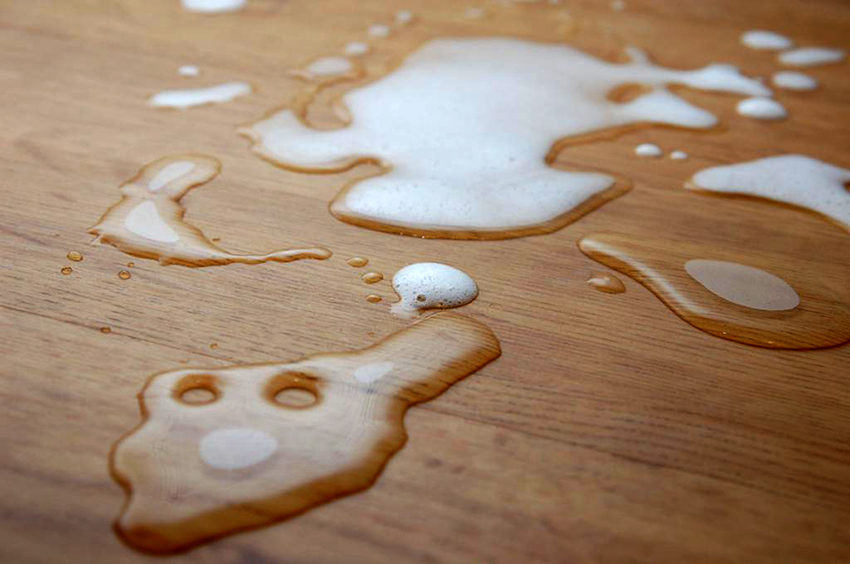
If the parquet is flooded, you need to quickly remove the liquid and dry the coating, for example, with a hairdryer.
- blackening of the coating;
- the development of fungus and mold;
- the formation of cracks, drops or chips;
- warping and bloating;
- discoloration of seams and joints.
To avoid having to overhaul the entire flooring, you should try to remove and soak all the moisture as quickly as possible using fans, heat guns or any other means. In this case, the cost of repairing the parquet after the flood will directly depend on the wetted area, as well as on the basis used for laying the coating.
If localized swelling occurs, you can try to dry the area with a regular hair dryer, which will melt the mastic. The appearance of the smell of mastic suggests that you can try to return the parquet to its original place, after which it is necessary to evenly distribute the load not only to the restored area, but also to grab at least one meter from each side.
Important! In a situation where minor flooding has occurred, but the water has spread over the entire floor area, everything will depend on the speed of response. If you immediately begin to dry the surface and get rid of moisture, there is a high probability that swelling and peeling of the floor will be avoided. If the floor was seriously flooded, a major overhaul is inevitable.

The result of the gulf can be the appearance of mold and mildew, as well as a change in the color of the coating.
If, as a result of flooding and soaking, the planks have lagged behind the base, you should immediately prepare to replace the coating with a new one. If individual dies are deformed, which remain tightly fixed to the surface, you can try to carry out restoration work.
When repairing parquet (consumer reviews contain such information), you can find situations when after the flood the parquet dries on its own after 3-7 days, takes on the same appearance, and the planks take their original position. Therefore, you should not immediately start a major repair. In any case, if you make a complete replacement, then it is quite possible to wait a few days.
If the parquet boards have dried well, but still have not taken their place or have remained swollen, a complete overlap will need to be performed. After replacing the damaged area, perform parquet scraping using a scraper, after which the damaged area is sanded and re-varnished. It should also be borne in mind that even if a little more than 30% of the flooring has suffered, experts will still recommend a complete overlap. In some cases, the price of parquet repair per m2 of the damaged area may be higher than the installation price per square meter of new parquet.
Features of the parquet repair without scraping
After laying parquet or parquet boards, scratches are inevitable, because the floor is constantly damaged by shoes, furniture legs, animal claws, as a result of children's games or if heavy objects fall on the surface. In some cases, you can try to restore the parquet without sanding, using a touch-up pencil or putty that matches the color of the base coat. If the area is small, you can do without sanding and applying varnish.
Damage and scratches from the boards are eliminated using a cosmetic putty, which is applied with an ordinary thin spatula. Choosing the right color is not difficult, because retail establishments offer a wide range of materials.
Helpful information! The second name for parquet putty is restoration paste. If you could not find the desired option on store shelves, you can try to make the paste yourself.
To make decorative putty, you need to mix crushed sawdust and epoxy varnish, observing a ratio of 1: 4. After that, the required amount of dye is added to the mixture. The finished paste is applied to the damaged area, which is then processed with fine sandpaper.
Sometimes, after the restoration of oak parquet, in order to create a holistic picture, it will be necessary to imitate joints in some areas using an ordinary awl and a metal ruler. Work should be carried out when the restoration paste is partially dry, it should not be very hard, but it should not stretch either. DIY step-by-step instructions for repairing parquet flooring:
- Using a ruler attached with the end end, make a small depression at the joint.
- Use an awl along the supplied ruler to apply end false joints.
The final stage of such a restoration is the varnishing of the parquet. It is appropriate to use any type of varnish here: alkyd, epoxy, acrylic or water-based. Before using the composition, it is recommended to study the application features specified in the instructions. You also need to take into account that to obtain a perfectly smooth surface, you will need to apply at least 2-3 layers of varnish. After the varnish has completely dried, to get the best result, it is recommended to rub the surface with mastic, after which the restoration of the old parquet with your own hands without grinding is considered complete.
Parquet repair and restoration: scraping, sanding, what makes these types of work different
Scraping is the process of leveling the surface of a floor covering by removing the worn layer from the parquet with a cutting tool. By grinding, we mean almost the same process, only in this case, the removal of the surface layer occurs by using an abrasive material.
Today, the processes are considered almost identical, which is associated with the frequent use of machine scraping, which requires the use of abrasive material. Parquet repair (grinding or scraping) is carried out with various equipment, the selection of which takes into account the following factors:
- The scale of the work. Scraping and restoration of parquet are carried out if it is necessary to process a small area and are mainly performed using hand tools. If you need to organize work on a large area, it is better to use a grinder.
- The original condition of the parquet before the renovation.If the coating is in disrepair, repairing the floor with your own hands using a hand tool will be quite time consuming, but a grinder will help to significantly reduce not only time, but also labor costs.
- Experience of the performer. Parquet repair (scraping) is often carried out by people who do not have much experience with grinding machines. Professional craftsmen rarely use hand tools in the repair process.
Helpful advice! If you want to repair the old parquet flooring in the apartment with your own hands faster, it is not necessary to immediately buy a grinder, because it is not only expensive, but also quite costly to maintain. The best option in this case is to rent the device for the duration of the repair work.
What tool is used to restore and repair old parquet: scraping
The main tool for manual scraping is considered to be a cycle, the task of which is to scrape, and not to shave off, a wooden covering. The device itself is of a simple design and consists of an angled metal plate with a fixed handle. Main technical characteristics of the device:
- Blade thickness. It is selected based on the height of the coating, taking into account the applied paint layer. A blade with a thickness of 0.7-0.8 mm is considered optimal, in this case the size of the removed layer should not exceed a few millimeters.
- Blade width. The wider the base, the more layer you can remove in one pass. Experts recommend purchasing a tool whose width does not exceed 45 mm; if the blade is wider, the cycles will be awkward to work with.
- Handle length and material. It is more convenient to control the pressure if the tool has a short handle. The recommended length is 45 mm. The material is chosen based on personal preferences, but still, many note that when working with a wooden handle, the hand sweats less than after a plastic one.
In addition, for the convenience of work, many product options are equipped with a pressure handle, which allows you to increase the pressure on the working tool. Separately, it is necessary to highlight the figured cycle used in the repair of block parquet for the design of figured wooden plinth. The estimated cost of the device, depending on the characteristics, varies from 100 to 200 rubles. If the blade breaks during the work, then it can be easily changed by purchasing a new one. Moreover, the price of the blades ranges from 30 to 50 rubles.
The main advantages of using a loop:
- low cost of the device;
- the ability to carry out repairs in hard-to-reach places;
- preservation of the appearance of the coating;
- no dust during operation.
It should be noted that when repairing artistic parquet, the use of a cycle allows you to easily perform actions, observing the correct direction of the wood grain. In addition to the advantages, some disadvantages stand out:
- time-consuming work;
- removal of a rather thick coating layer;
- the need to apply a large amount of physical strength;
- work in an uncomfortable position.
What is the grinding process: the price of repairing an old parquet
When it comes to grinding, you can use a variety of abrasive options. The simplest is sandpaper. Of course, doing the work by hand is rather long and difficult. Some people fix sandpaper on the base of the shoe to speed up the restoration, but this method has not become widespread due to the fact that it is difficult to control footwork and maintain the same pressure.
A more advanced option for carrying out repairs is the use of a drum-type sander.The device is mainly used for deep grinding, because coarse abrasives cannot leave behind a perfectly smooth wooden floor. The machine removes 1.5-2 mm of coating in one pass. In order to prevent the dust from removing the coating from spreading throughout the room, the device is additionally equipped with a dust collector. The most popular model of the parquet grinding machine is SO-206, the price of which varies from 56 to 70 thousand rubles.
In the process of both grinding and scraping, scratches may appear when the coarse abrasive grain leaves traces. This is especially noticeable on soft woods such as pine. In this case, you can re-grind or cover the damaged areas with restoration paste. After completing all the restoration work, you need to apply a protective varnish coating, which not only makes the parquet attractive, but also protects the surface from mechanical damage.
Helpful advice! It is recommended to polish the floor covering at least once a year. The more layers, the stronger the coating. All work on applying the varnish layer must be carried out in a respirator.
As for the price of restoration of the old parquet, it directly depends on the initial condition of the coating. If the parquet is in a satisfactory condition and you only need to walk on it with a grinder, as well as restore the varnish layer, then the cost will be about 850 rubles / m². When you want to make the flooring perfect, you need to carry out a variety of work: scraping and grinding with a drum machine, re-grinding with a surface grinder, tinting and varnishing. Such work will not cost less than 1250 rubles / m².
Parquet is an expensive floor covering that has long been admired. Even the cheapest parquet will always look better and last longer than the most expensive laminate. In order not to have to carry out a major overhaul of the parquet, it is recommended from time to time to carry out restoration and restoration work that can extend the life of the material. Even a simple application of an additional layer of varnish will help freshen the parquet and restore its shine.

